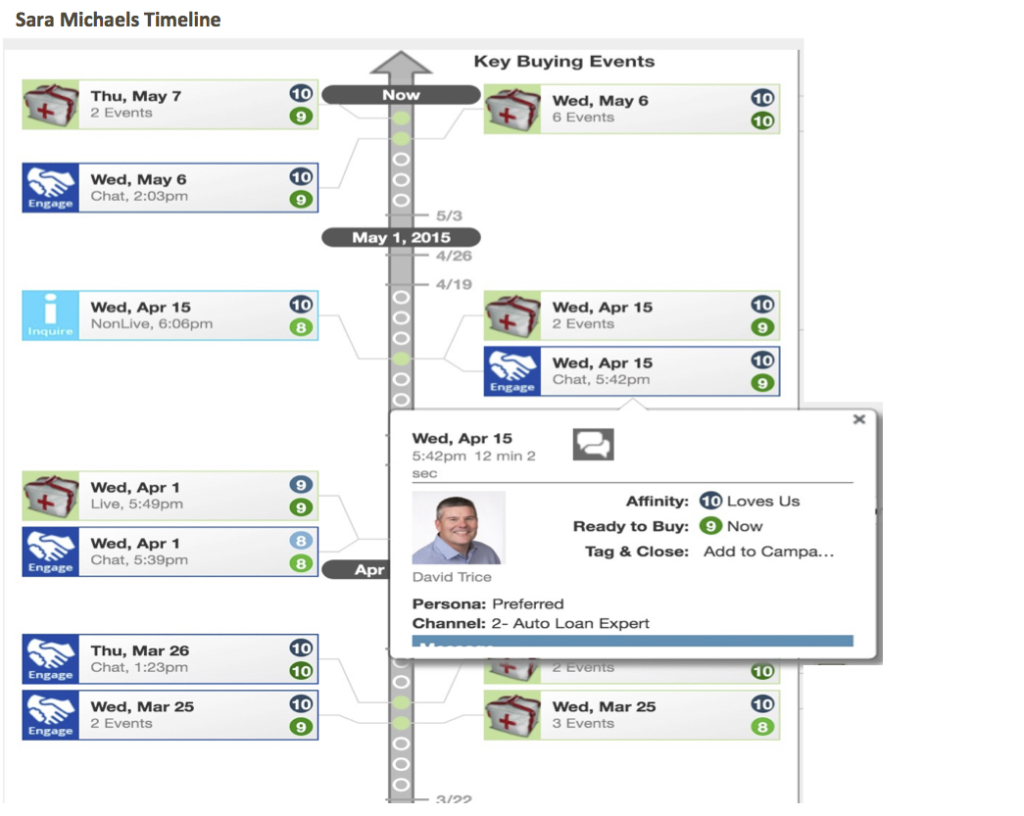In-Journey, Real-time Customer Journey Mapping
Lots of clients ask, “How can I improve my customer experience to gain and retain loyal customers?” Some brands are operating on old legacy systems and are having a difficult time being able to incorporate customer data with the real-time customer experience. If that is possible, it will help the employees (marketing, sales, customer service, customer success management…) to provide the best in-context answers depending on what a customer has already looked at, has already done with a brand and where they seem to be stuck or need more information to choose a product or service. If you want to understand this more, here is a link to a webinar with more detail: Real-time, in-journey customer experience mapping.
We see this “in-journey” customer data and customer analytics capability as key to being able to deliver on engaging customer experiences. Here’s a picture of what an in-journey customer experience brand dashboard can look like:
Source of Diagram: Engage.Cx
What The In-Journey Customer Engagement Dashboard Looks Like
From the in-journey customer experience dashboard, someone trying to help support a customer can follow along the gray line in the middle (with the dots in it and a arrow at the top) and see each of the “events” or interactions the customer has already had with the company. For instance, on Wednesday, March 25th, they had several engagements with the brand. If you look at the bottom and to the left of the diagram, you’ll see on Thursday, March 26th at 1:23 PM – the customer had a chat session with the brand. On Wednesday, April 1, they had another chat session at 5:39 PM.
On April 15th, at 5:42 PM the customer had a 12 min, 2 second chat with the brand. The affinity was rated at a 10 and the readiness to buy was a 9, meaning NOW. As you follow the gray arrow you see on Wednesday April 15th, the customer was in the store. On May 6th, the customer had another chat session with the brand at 2:03 PM. So this what a customer’s Key Brand Engagement and Buying Interactions Timeline can look like. With this information in-front of a sales person, a customer service agent or marketing professional, they can not only see what this particular customer’s brand engagement pattern is (how they go from one channel to another, what time they engage with the brand, whether it is in the store, or online….)
And if online, what channel they use – chat, email, website, etc…) This is all very helpful when an employee is trying to help the customer make a decision. Things that the customer has already asked don’t have to be repeated. New questions can be answered and the brand can really appear and be helpful to a customer. And finally the employee (marketing, sales or customer service) can clearly see what the customer needs next. This helps the employee decide what content to send the customer or the buying objections they may have had and how they the employee can best help that customer to make a good decision.
Aggregation of Customer Engagement Patterns of Customer Journey
What a brand can also do is to look in aggregate, many customers over time, to see how customers generally engage with a brand. This can even start to take the place of “guessing” the customer journey mapping that brands do (often from the company’s point of view and not necessarily what customers actually do.) With that real customer journey mapping in hand, brands can change their processes to make the best possible customer journey, with the least friction, from the customer’s point of view.
Real-time Customer Journey Mapping
With this type of real customer journey mapping, a brand can look at the content they need to provide to marketing, buying, customer service cycle as well as how to take extra steps out of their processes to make it easier for customers to make a commitment to a brand. With this type of customer journey information, a brand can really begin to understand their customers to the point that they make it so easy to do business with that brand, that customers not only become loyal, but they also become customer advocates and refer their friends and family.
How does your company realize it’s customer journey’s? Do they do it on paper, in a large conference room? or do they map it real-time as the customer is on their journey? Which do you think is more effective in getting to building the least friction and the highest lead conversion rates?
@drnatalie, VP and Principal Analyst, Covering Marketing, Sales and Customer Service to Deliver Great Customer Experiences



